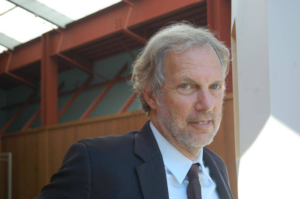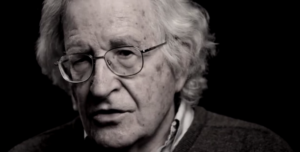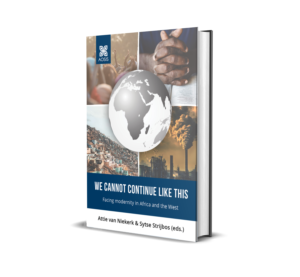Indigenous Organizers In Alaska Lead The Way Toward Livable Climate Future
In the United States, the public and politicians are moving in opposite directions on climate change. Grassroots environmental activism is spreading on the local state, regional and national levels, while Congress generally continues with a “business-as-usual” approach, rejecting the foremost way to avoid the worst consequences of global warming: the Green New Deal.
While the Green New Deal remains aspirational in the U.S., it has been adopted by the European Union, and scores of countries around the world have committed to pursuing its goals.
Among the many organizations in the U.S. fighting for environmental sustainability and a just transition toward clean, renewable energy is Native Movement, an organization dedicated to building people power for transformative change and imagining a world without fossil fuels.
“There is no future at all with continued oil and gas extraction,” says Ruth Łchav’aya K’isen Miller, Native Movement’s climate justice director, in this exclusive interview for Truthout. “We must eliminate fossil fuel extraction now through a just transition that guarantees justice for workers and for the lands.”
Miller is a Dena’ina Athabascan and Ashkenazi Jewish woman. She works toward Indigenous rights advocacy and is a member of the Alaska Just Transition Collective and the Alaska Climate Alliance.
C.J. Polychroniou: Ruth, what does a just transition, from a Native and Indigenous perspective, look like in Alaska?
Ruth Miller: A just transition is a journey of returning to economies, governance structures and social contracts that are not new, but built on Indigenous wisdoms and place-based knowledge to create a truly regenerative economy. A just transition will be built on a values framework of anti-racism and decolonization, deep reciprocity, and respect for all lands, waters and air.
Any just transition for Alaska must be rooted in Indigenous perspectives, because it is Alaska’s Native nations who have lived in harmony with these lands for over 30,000 years, and whose deep connections, encyclopedic knowledge and spiritual interconnectivity will heal the wounds of the past 100 years of colonization and extractive capitalism. For this reason, we refer to this shift in resource extraction, governance, labor practices and culture as “remembering forward,” first translated in 2020 in the Behnti Kengaga language as “Kohtr’elneyh,” and in 2022 in the Dena’ina language as “Nughelnik.”
In Alaska this takes many forms. It includes deep democracy, which actively seeks to incorporate minority voices as well as those in the majority and requires the diversification of elected leaders. It includes an end to all oil and gas extraction, as well as irresponsible mining and other development projects. It means a return to responsible land management practices, including timber and fisheries management, and it means returning stewardship of lands and waters back to their original and eternal caretakers. It includes supporting Alaska Native language and cultural revitalizations while supporting unimpeachable subsistence hunting and fishing rights. It means all workers will have their fair pay and rights protected through strong unions, while communities will be empowered to support themselves through mutual aid networks and non-predatory community loan funds for moving toward clean and efficient energy.
A just transition for Alaska means investing in regenerative industries like sustainable mariculture and ocean-healing crops such as kelp, while also supporting culturally informed eco-tourism that elevates local business with local returns. As we have previously written for Non-Profit Quarterly, “To achieve [a Just Transition], resources must be acquired through regenerative practices, labor must be organized through voluntary cooperation and decolonial mindsets, culture must be based on caring and sacred relationships, and governance must reflect deep democracy and relocalization.”
Why is the complete elimination of fossil fuel extraction needed to secure a just transition?
The simple truth is that the oil and gas industry is one of the largest contributors to climate change, spewing greenhouse gas emissions to the point at which we are now in the sixth great extinction — one which has been entirely caused by recent human activity. The Arctic, being bled dry for its non-renewable resources, is now experiencing a climate crisis at two to four times the rate as the rest of the globe.
In Alaska, thawing permafrost is not only destabilizing Arctic infrastructure, but the thawing of eons-old organic material leads to the accelerated release of methane, a gas more than 25 times as potent as carbon dioxide at trapping heat in the atmosphere. The same thawing is leading to coastal and riverbed erosion, causing more and more communities to be forced to relocate. Already less Arctic sea ice returns in the winter than past generations remember, putting coastal communities at increased risk of damage by winter storms.
With a global temperature rise of 2.5 degrees Celsius or higher (which we are projected to reach within the decade without drastic international action now), it is expected we will have an entirely ice-free Arctic Ocean at least once every eight years. Beyond their climate effects, extractive projects are already causing extreme and irreversible devastation to lands, waters and food systems.
The ecological harm caused by such projects leaves toxic waste, pollution and contamination, harming the health of Alaska Native peoples who live closest with the land. Near the sites of extractive projects, high rates of cancers, birth defects, respiratory illnesses, and more health impacts have been observed for decades. Indigenous women, girls and two-spirit relatives suffer increased rates of homicide, disappearance and domestic violence in and around the man camps that supply labor to extractive development projects.
There is no future at all with continued oil and gas extraction…. We must eliminate fossil fuel extraction now through a just transition that guarantees justice for workers and for the lands.
What are the main obstacles for Alaska to overcome its oil extraction and how would this impact Alaskans?
The dominant story of Alaska began as the “last frontier,” ready to be settled and exploited by colonizers. The same narrative now tells the public that the Alaskan economy is dependent on oil and gas, and that we would be left bereft if we challenged those industries. Dark money streams, particularly from the Koch brothers, flow into Alaska to purchase elections for extractive industries.
This is a hurdle we are poised to overcome. These stories are nothing more than myths meant to erase Indigenous history and excellence and undermine any visioning toward a truly regenerative economy for our state. Colonial distortions of history poison our education system and prevent real conversation about the past and future of our state and its people. We are seeking deep decolonization and truth-telling to confront the disempowerment and marginalization of Native people in the name of resource extraction. Ending oil extraction requires questioning the systems that rely on it and healing the wounds of our communities so we may envision a collective future together. As the boom-and-bust cycle of resource extraction continues to enrich the elite few at the cost of the public, Alaskans are awakening to the power and potential of a better economy — one that is just, regenerative and sustainable.
Already communities are showing ingenuity and resilience as they develop place-based economies that support livelihoods and healthy living — small-scale hydroelectric turbines in Igiugig village to move the community off diesel, high-tunnel greenhouses for year-round produce in the interior of Alaska, mariculture and kelp farming in the Southcentral and Southeast regions. Grassroots efforts across the state (many Black, Indigenous and people of color-led and in rural communities) are leading the way, through renewable energy, local food systems, eco-tourism, sustainable recreation, and much more. Strong unions like the International Brotherhood of Electrical Workers are already providing apprenticeship programs to invest in worker transition, while other groups like the Fairbanks Women Carpenters Union, UNITE HERE are pursuing worker health and safety.
The burden of transformation is on the state of Alaska and the federal government to catch up to the progress already happening across Alaska. Alaskans are designing our collective future and taking our story into our own hands.
What is the Alaska Just Transition Collective and who are the communities it is accountable to? How does it bring folks together in action to advance a shared vision for Alaska’s future?
The Alaska Just Transition Collective is a group of Alaska-based organizations with a spectrum of focuses working to support Alaska along a path toward a post-oil economy, an Indigenized Regenerative Economy. Alaska Just Transition facilitates intersectional collaboration to build critical thinking around economic and social transition. The Alaska Just Transition Collective is currently comprised of a number of organizations, including Native Movement, Fairbanks Climate Action Coalition, Alaska Community Action on Toxics, Alaska Public Interest Research Group, Native Peoples Action, The Alaska Center, Alaska Poor People’s Campaign and Native Conservancy. However, the just transition community is significantly broader and ever-expanding.
In January of 2020, the first Alaska Just Transition Summit was held on the lands of the Lower Tanana Dené peoples. Kohtr’elneyh (“Remembering Forward” in Benhti kanaga) was a groundbreaking gathering in Alaska that brought together community organizers, tribal leaders, artists, union members, faith leaders, investors, elected officials, educators, small business owners, renewable energy industry leaders, and many more from critical sectors. Alaskans shared, brainstormed and strategized a collective path toward a post-oil economy built on just values frameworks with a home for all. We dived deep into the healing necessary to move toward decolonization, and centered Indigenous voices to move with place-based wisdom and ancestral imperative.
Once the pandemic was upon us, we shifted to online offerings that dove into the intricacies of just transition in a four-part webinar series, and later convened “Fireside Chats” to explore national policy options for Alaska, following the pillars of the THRIVE Agenda (thriveagenda.com) and making the national approaches relatable and visible to Alaskans. Through these online gatherings we reengaged with the hundreds of community members that joined us in person in 2020, as well as expanded our community and tended to new and exciting relationships with more sectors and local leaders.
This year we gather once more in person, on Dena’ina lands, proudly bearing the name Nughelnik (“It is remembered within us” in Dena’ina qenaga). This summit will work to address the pains of the past two years, while also diving deeper into real strategy and active examples of just transition already taking place in Alaska. A just transition does not exist without the leadership and sovereignty of the communities that are deeply impacted by economic transition. Without including the voices of Black, Brown, Indigenous, people of color, disabled, queer, immigrant communities, for example, we are missing key leadership in our path forward. We are working to elevate voices that were regretfully not as visible in our first summit, and to make invitations for all identities to feel stewardship and ownership over our collective space.
As organizers, we hope that the next iteration will be regional and local just transition plans that will ripple across the state and be stewarded by local community members. Through this approach, our partnered organizations will continue to offer support and convening space for community members to lead us forward.
The Just Transition Collective is uplifting Indigenous place-based knowledge systems and ways of life while shaping regenerative economies, stewarding lands and waters, and building more just and equitable communities for all. Can you share the specific principles and aims guiding this vision?
We as a collective honor the Jemez Principles of Democratic Organizing, which in summation includes deep inclusion of all voices and identities; an emphasis of community-driven organizing, which means we engage when tribal sovereigns and communities most impacted by issues invite us; allowing people to speak for themselves; working together in solidarity and mutuality by understanding that we are deeply interconnected and must transform together; building just relationships among ourselves, modeling just workplace practices that reflect compassion and humanity; and commitment to self-transformation.
We also honor the Defend the Sacred Alaska Principles, which describe a similar approach to community organizing:
– Unlearn, Dismantle, Heal, and Create: Decolonize.
– Organize from the “bottom-up.”
– Uplift a matriarchal, decentralized, and marginalized leadership.
– Grow an inclusive movement for all.
– Create space for people to speak for themselves.
– Work together in unity, solidarity, and accountability to each other.
– Strive to build just relationships in our organizing.
– Uplifting marginalized & oppressed voices that align with these values.
– Commit to a just and equitable transition away from an extractive, oppressive economy toward a regenerative, holistic, living worldview.
– Acknowledge that we exist in a tangible system of racial injustice and that it is our responsibility to dismantle it.
– Be soulful
While we carry these principles through all our work as organizations, our tangible vision for just transition is articulated through these goals of our recently held summit, which will shine the light toward future work:
– “Remember Forward through Grief and Celebration”: This means recognizing that for many communities, the pandemic surfaced previously unspoken imbalances wrought by capitalism, white supremacy and patriarchy, while many other communities have been acutely aware of their struggle to survive and regain balance since the onset of colonization. As outlined in the 2022 Alaska Just Transition Guide, this goal is about our effort to “reconnect healing as an essential strategy, as we share tools and practices as we move through tumultuous times.”
– “Shape Community and Post-Pandemic Economy”: This means developing “a meaningful and reciprocal plan of action to support communities, extend care, and articulate long-term healing needed for Alaska’s economy and culture.”
– “Reimagine Community in a Post-Extractive Economy”: This involves creating a space for our community “to align around a shared vision for a fundamental transformation in Alaska and beyond” and to turn this vision into action by identifying goals and sharing strategies.
– “Weave Storytelling to Illuminate the Path”: This involves an effort to “highlight Alaskan stories of day-to-day challenges and celebrations on the path of visionary planning.”
What strategies have you discovered work best for bringing grassroots and frontline perspectives to bear on national policies like the Green New Deal?
Our theory of engagement with national policy requires translating policy into accessible formats but also empowering our Native frontline communities to speak back to national policy.
Policy work must be reflective of those it is meant to help but also must grow from the ground and answer the needs of communities while honoring their expertise. Therefore, our work is twofold: Firstly, as is the case with the Green New Deal, we were involved in early stages to edit initial drafts of National Economic Recovery Plan proposals to ensure that Alaskan interests were protected, but also that there was unique language that accommodated both our tribal sovereign governments and our complex social services distribution, often through Alaska Native corporations.
We worked with our national partners to ensure that Alaskans could see themselves in the proposals and had many opportunities for consultation. Concurrently, we also elevated examples of Alaskan leadership, where our local initiatives were not just supporting national policy but truly driving it with visionary action: We drafted the “Alaska’s Time to THRIVE” zine to illustrate how regenerative economy is already taking hold across our state, in all aspects of a just transition. This document and the accompanying “Fireside Chats” allowed for deep consultation on these policies from an abundance mindset, where Alaskans were already positioned to lead.
Additionally, we work diligently with community members to elevate local stories from the land, and to empower narrative sovereignty — the ability to tell one’s own story with integrity and authenticity. Through storytelling skills-building and video projects, stories from community members and from the land are able to speak for themselves. We can offer our organizations as conduits to uplift and share these stories widely, particularly within national and international decision-making spaces.
One example of this initiative was our Fall 2021 Indigenous Filmmakers Intensive. Native Movement partnered with the University of Alaska Fairbanks to offer an intense curriculum guided by faculty members and Indigenous film industry professionals, as well as filmmaking gear as students wrote, directed and produced stories of climate justice from their rural communities. These stories were later showcased at the United Nations global climate negotiations at COP26 in Glasgow, Scotland, and will soon be shown at the Anchorage Museum. Through these techniques, we are able to deepen the sovereignty and self-determination of our communities while sharing their wisdom and leadership with national and international policy makers.
Copyright © Truthout. May not be reprinted without permission.
C.J. Polychroniou is a political scientist/political economist, author, and journalist who has taught and worked in numerous universities and research centers in Europe and the United States. Currently, his main research interests are in U.S. politics and the political economy of the United States, European economic integration, globalization, climate change and environmental economics, and the deconstruction of neoliberalism’s politico-economic project. He is a regular contributor to Truthout as well as a member of Truthout’s Public Intellectual Project. He has published scores of books and over 1,000 articles which have appeared in a variety of journals, magazines, newspapers and popular news websites. Many of his publications have been translated into a multitude of different languages, including Arabic, Chinese, Croatian, Dutch, French, German, Greek, Italian, Japanese, Portuguese, Russian, Spanish and Turkish. His latest books are Optimism Over Despair: Noam Chomsky On Capitalism, Empire, and Social Change (2017); Climate Crisis and the Global Green New Deal: The Political Economy of Saving the Planet (with Noam Chomsky and Robert Pollin as primary authors, 2020); The Precipice: Neoliberalism, the Pandemic, and the Urgent Need for Radical Change (an anthology of interviews with Noam Chomsky, 2021); and Economics and the Left: Interviews with Progressive Economists (2021).





